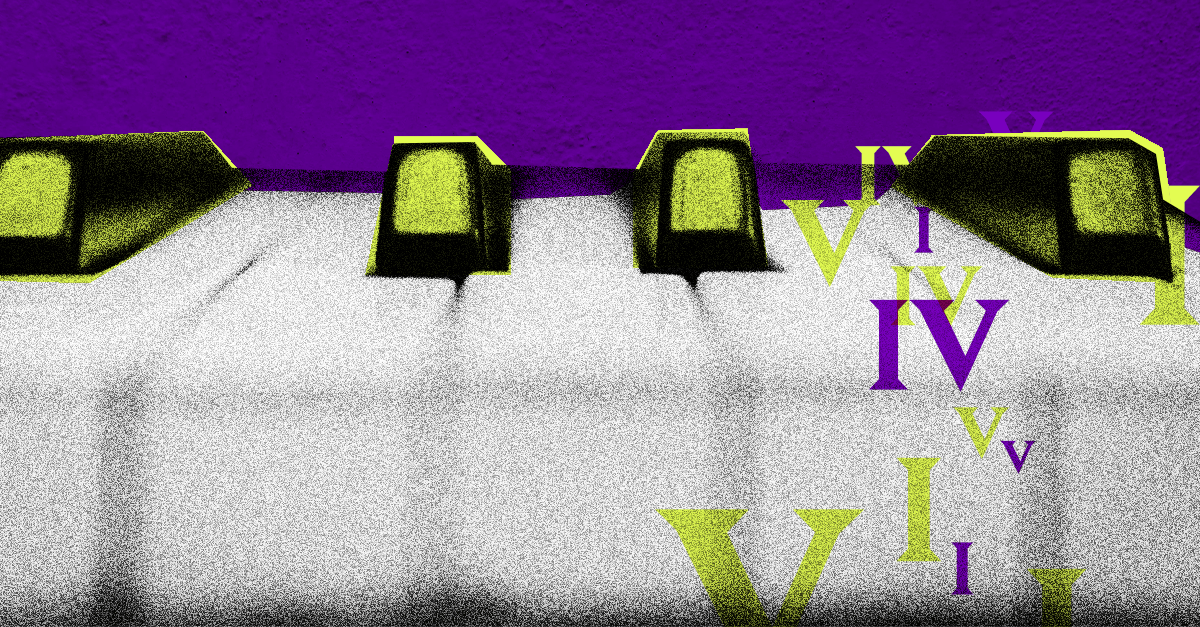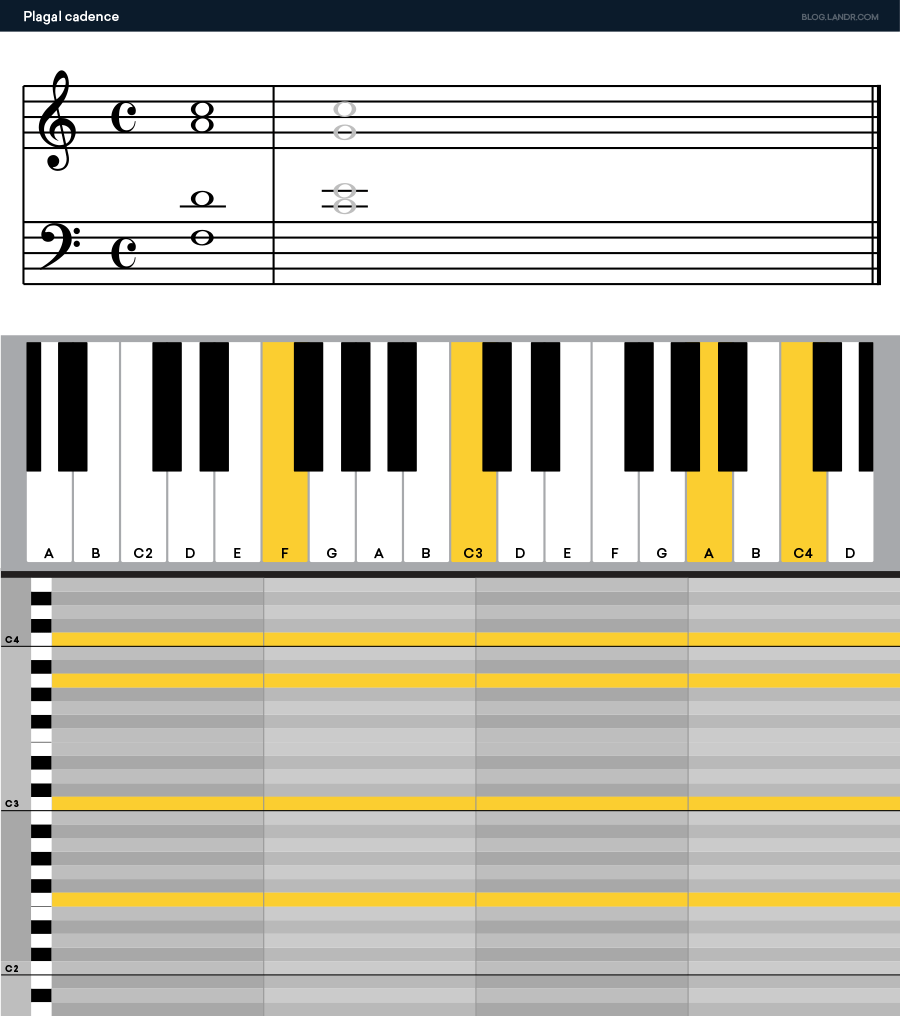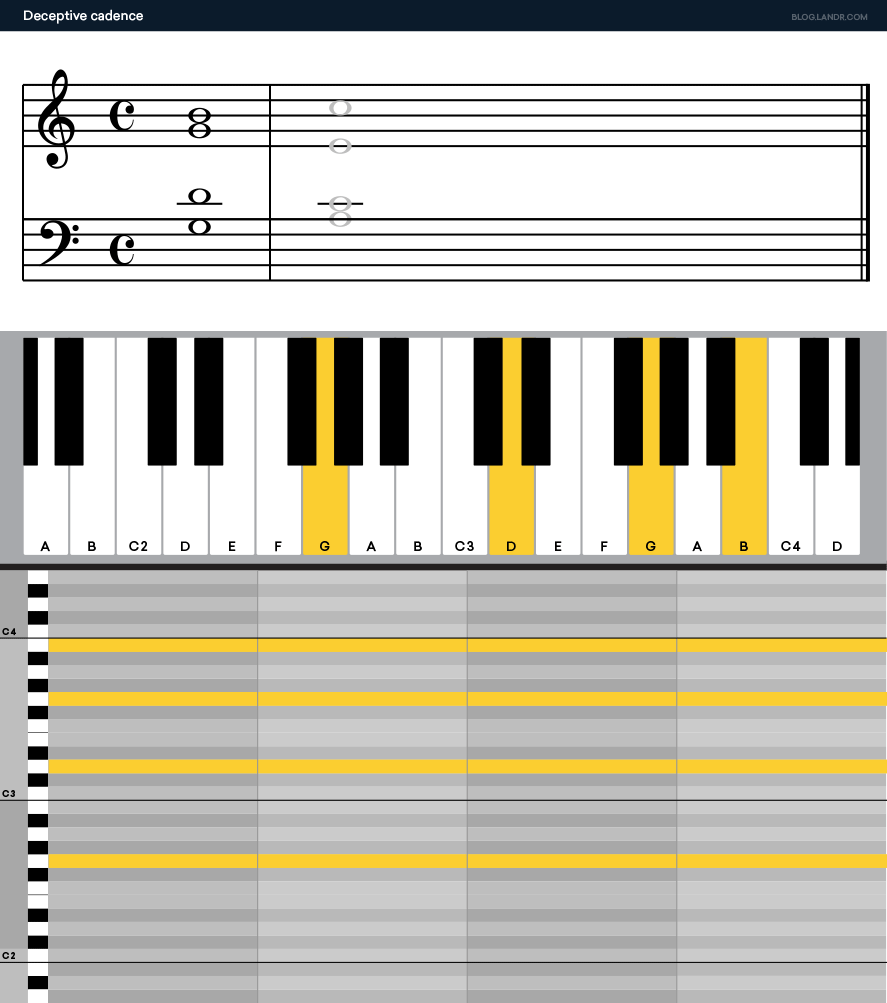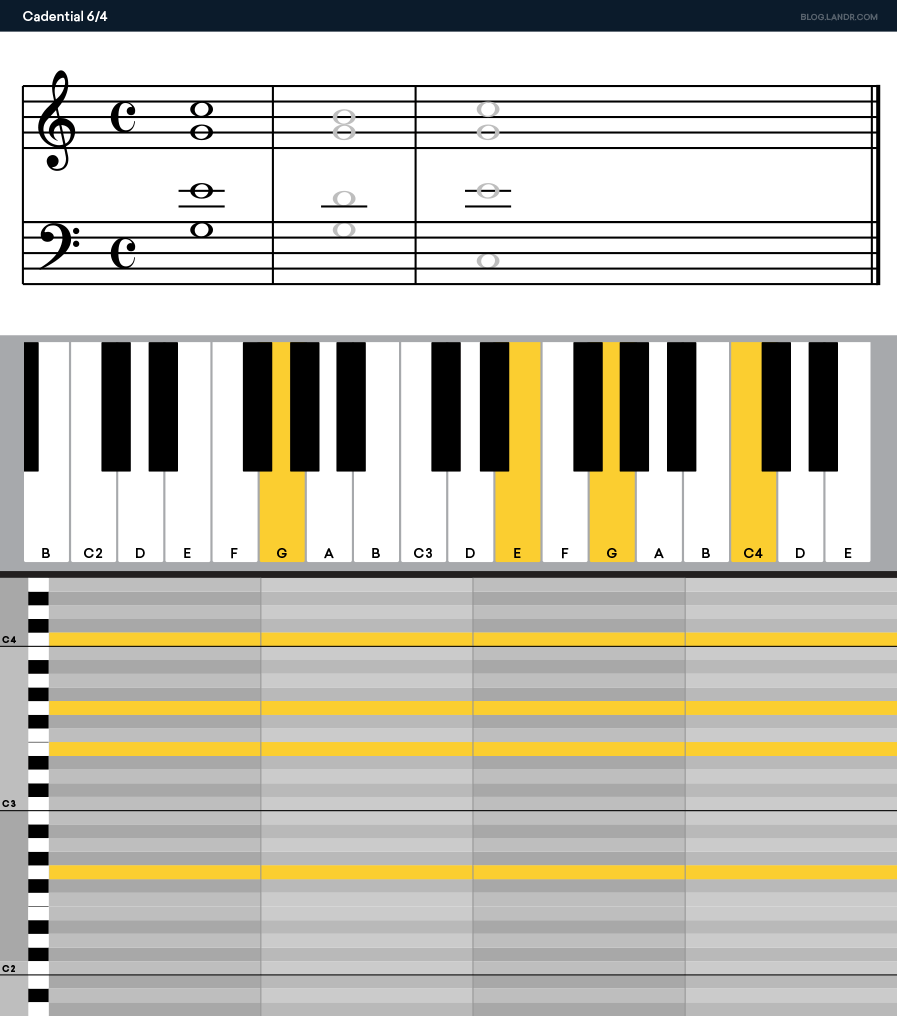
What are Cadences and How to Use Them in Your Songwriting

Cadences are some of the most fundamental harmonic gestures in music.
They bring a feeling of closure to musical phrases the same way a period ends a sentence.
But understanding cadences is hard if you’ve never seen them before.
In this article I’ll go through the different types of cadences, how they work and how to use them in your music.
What is a cadence in music?
Cadential figures are generally used to separate distinct musical phrases
A musical cadence is a melodic or harmonic figure that gives a phrase the sense of resolution or closure. Cadences typically contain harmonic action that confirms the key of a piece of music through motion from dominant to tonic harmony. There are several different categories of musical cadence that function differently and create variations on harmonic resolution.
Cadences play an important role in the structure of music. Cadential figures are generally used to separate distinct musical phrases.
Traditional musical structures depend on cadences to give listeners cues about their form.
These conventions are no longer essential components of music, but there’s still a lot to learn about good songwriting if you understand cadences.
Theory guides, production tips, new free plugins, gear guides and more—delivered weekly
Keep up with the LANDR Blog.
Types of cadences
There are 5 distinct types of cadence in music:
- The authentic (or perfect) cadence
- The plagal cadence
- The half cadence
- The deceptive cadence
- The cadential six-four
Each type of cadence has a slightly different effect to bring closure to a phrase.
Each type of cadence has a slightly different effect to bring closure to a phrase.
Here are the main cadence types:
1. Authentic cadence
An authentic cadence is movement from V – I at the end of a phrase.

A perfect authentic cadence (PAC) is a simple dominant-tonic cadence where both chords are voiced in root position.
This is the strongest and most straightforward cadential figure that gives the most complete harmonic and melodic closure.
The V chord will often include the seventh degree in an authentic cadence for even more pronounced resolution.
2. Plagal cadence

The plagal cadence is a cadential figure based on movement from IV to I. Plagal cadences date from the earliest forms of western music, but were popularized in 19th century arrangements of church hymns.
Their harmonic function is slightly ambiguous, but the plagal cadence is easily recognizable from the closing phrases of some traditional hymns and gospel songs.
3. Half cadence
A half cadence is a musical phrase that rests on dominant harmony instead of following through to the tonic.
Half-cadential figures are often used to punctuate a pause in between phrases within a larger harmonic structure.
A half cadence can give the sensation of a harmonic “cliffhanger.”

There are half-cadences throughout this David Bowie song that build tension over V7.
4. Deceptive cadence
The deceptive cadence subverts your expectations for tonic-dominant motion.
They start out just like their authentic counterparts, but veer away from tonic harmony when you least expect it.
Following the dominant chord, the deceptive cadence can resolve to several different harmonic areas.
The most common is VI, although nearly any other chord can create the characteristic “deceptive” sensation.

When your harmonic intuition gets faked out at the end of a phrase you might be hearing a deceptive cadence! Listen to what happens after the dominant chord in the chorus of this classic Beatles tune:
5. Cadential six-four
One last cadential figure worth mentioning is the so-called cadential six-four. This is an authentic cadence with a twist.
The “six-four” refers to the figured bass symbols used to represent the inversion of the dominant chord.
It’s a little misleading since the inverted chord in this case is actually the tonic chord in second inversion.
However, since that means the 5th degree of the scale is in the lowest voice, we hear this chord as dominant harmony.

That function becomes apparent when you hear this type of cadence in action. The cadential six-four is a familiar sound that prolongs dominant harmony before the end of a phrase.
The cadential six-four is a familiar sound that prolongs dominant harmony before the end of a phrase.
I could explain it further but it’s easier to hear the effect for yourself. The vocal hook of this classic love song relies on the power of the cadential six-four to prolong dominant harmony.
How to use cadences in your songwriting
These definitions seem technical, but using cadences in your songwriting is pretty easy.
The key is paying attention to where the dominant chords fall in your chord progressions.
Listen to the way your phrases unfold. Do they end by building tension over V? Congratulations, you’ve got a half cadence!
Do they confidently move from root V7 – I like a classic Beatles track? It’s an authentic cadence!
As you get more familiar with the concept you can start experimenting with the other types of cadences.
Ending a phrase with I-IV-I can give your song a gospel flavour. That’s a plagal cadence in action.
And subverting your listeners expectations is the best way to keep them engaged. That’s where deceptive cadences come in!
Sense of closure
Cadences are an important part of your harmonic vocabulary.
The sense of closure they provide is an important tool for constructing musical phrases.
Use this article to get started with cadences and use them in your songwriting.
Gear guides, tips, tutorials, inspiration and more—delivered weekly.
Keep up with the LANDR Blog.




